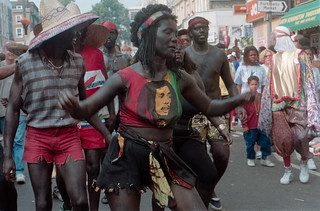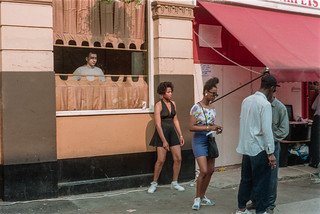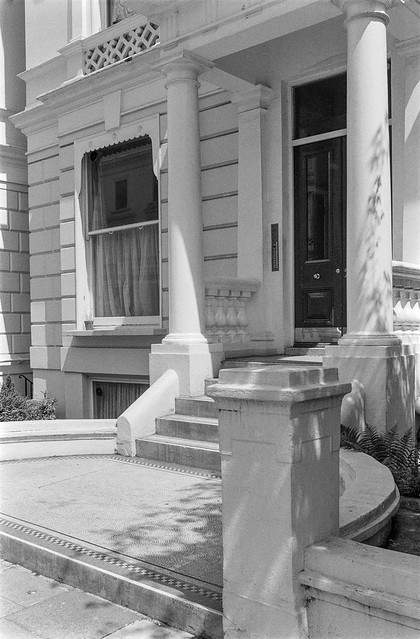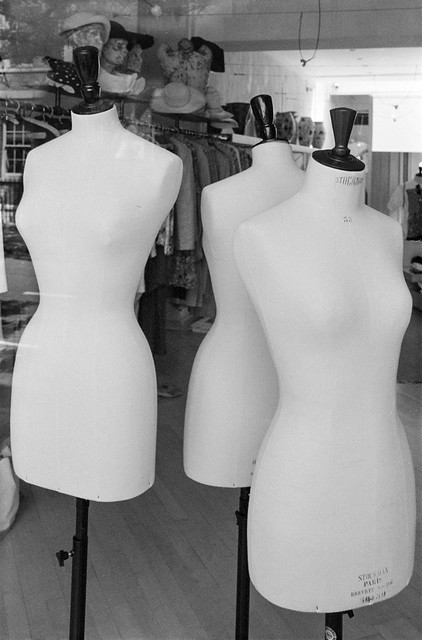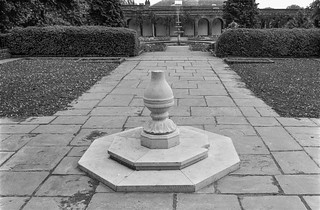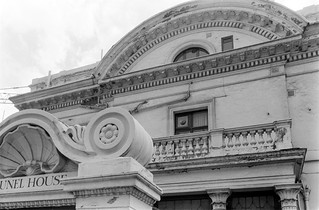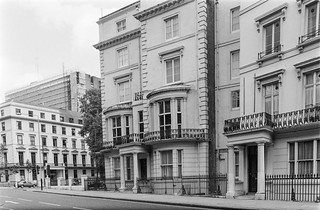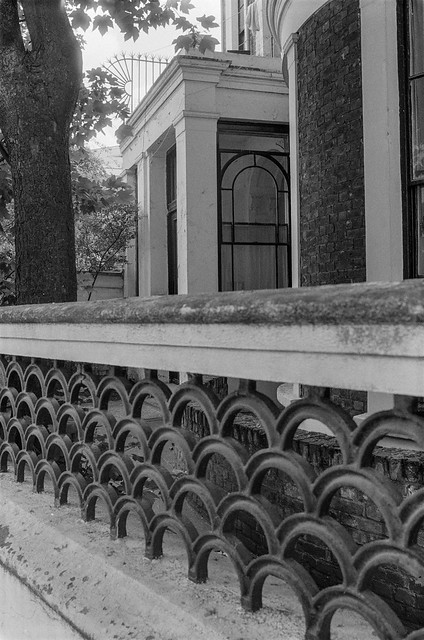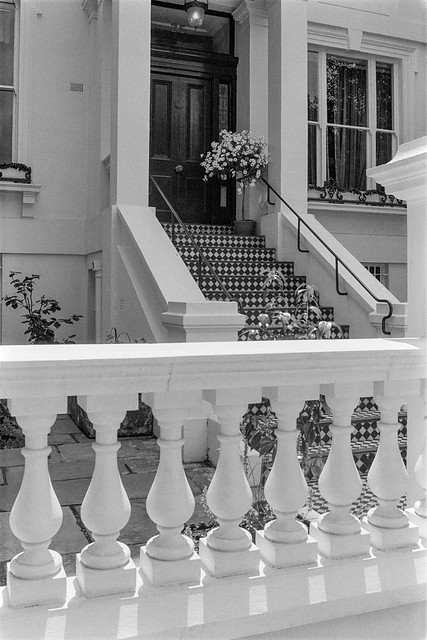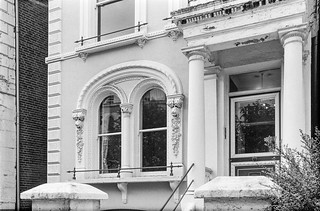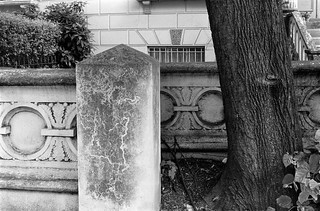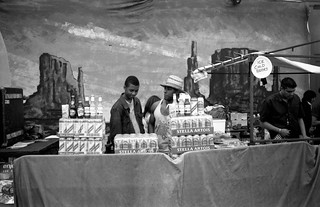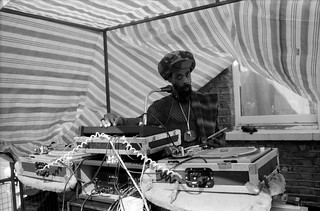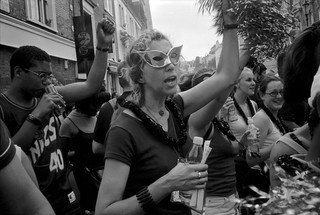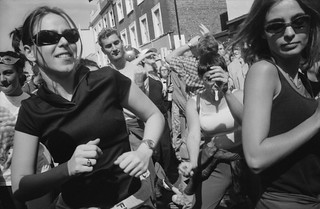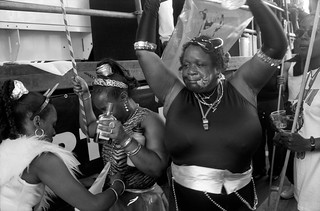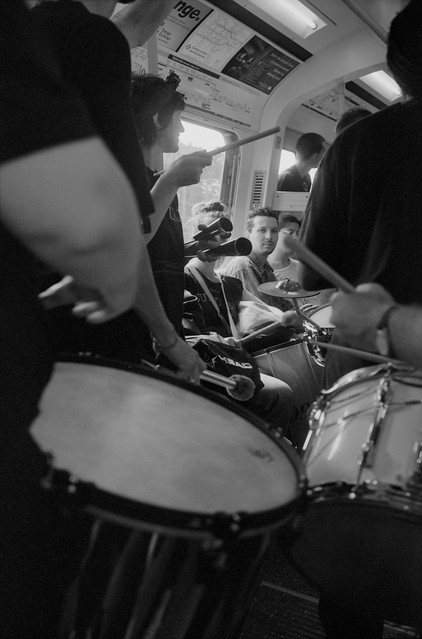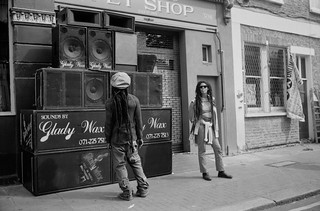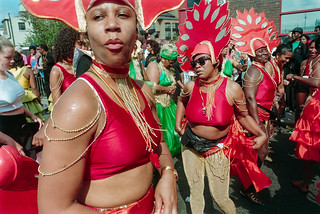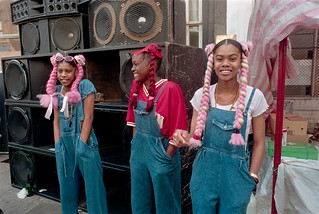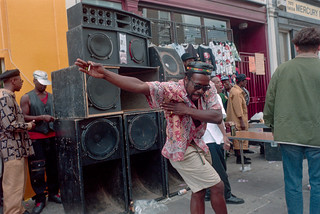Though I think my best pictures of Notting Hill Carnival were in black and white, most years until I moved to using digital cameras I photographed there in both black and white and colour. By 1990, when I first photographed Carnival, for colour I was exclusively using colour negative film.
I could process colour negative film myself, and by this time much of my black and white work was taken using Ilford’s chromogenic films, at first XP1 which had been introduced in 1980, then XP2 which replaced it in Spring 1991, which was designed to be processed in the standard C41 chemicals used for colour neg, though Ilford still produced its own specific processing kit just for the black and white versions.
While it was simple to contact print black and white negatives, producing these in colour from colour negatives was rather more difficult, and it was only after I’d squeezed a colour paper processing line into my diminutive darkroom in the mid 1990s that I began to do so. Even then, getting reasonably correct colour was a problem.
Before that time, I sent away my colour films for trade processing, and being a little short of cash mostly that meant using cheap non-professional processing labs, paying for processing and printing as 4″x6″ enprints. The film processing was fine, but the printing varied from good to a rainbow range of colour casts and variable contrast. Eventually I found a cheap postal amateur service that was reasonably consistent and still cost only around a third of my local pro lab.
Now I’ve digitised most of the colour negatives from the 1990 Notting Hill Carnival, and have found them rather more interesting than I expected. Having them in digital form makes it easier to work on the pictures as I could when making black and white prints, with some dodging and burning where needed.
There are a few pictures in this post, and I’ll put at least one more set from 1990 on here in another post, but if you want to look at more, and at those from later years you can go to page 5 of Notting Hill Carnival – the 1990s. Clicking on any of the pictures above will also take you to a larger version in this Flickr album.
All photographs on this and my other sites, unless otherwise stated, are taken by and copyright of Peter Marshall, and are available for reproduction or can be bought as prints.
